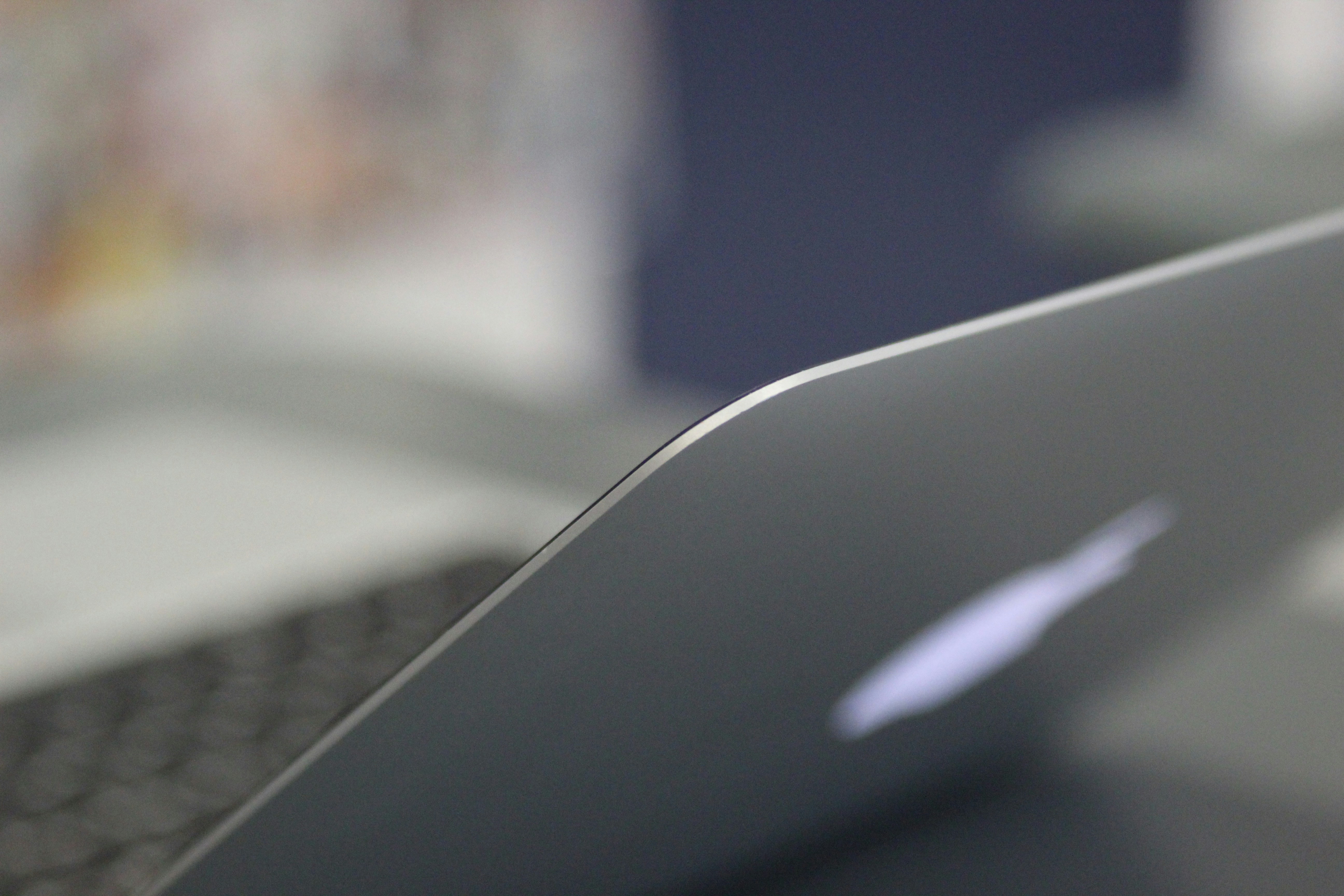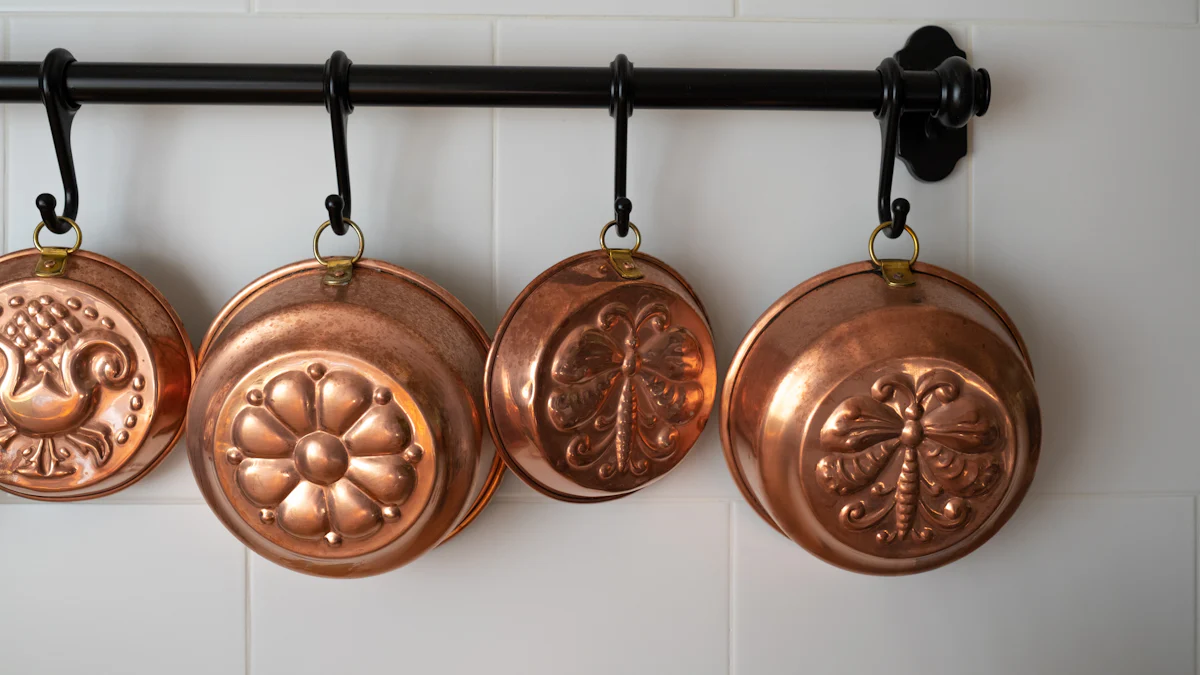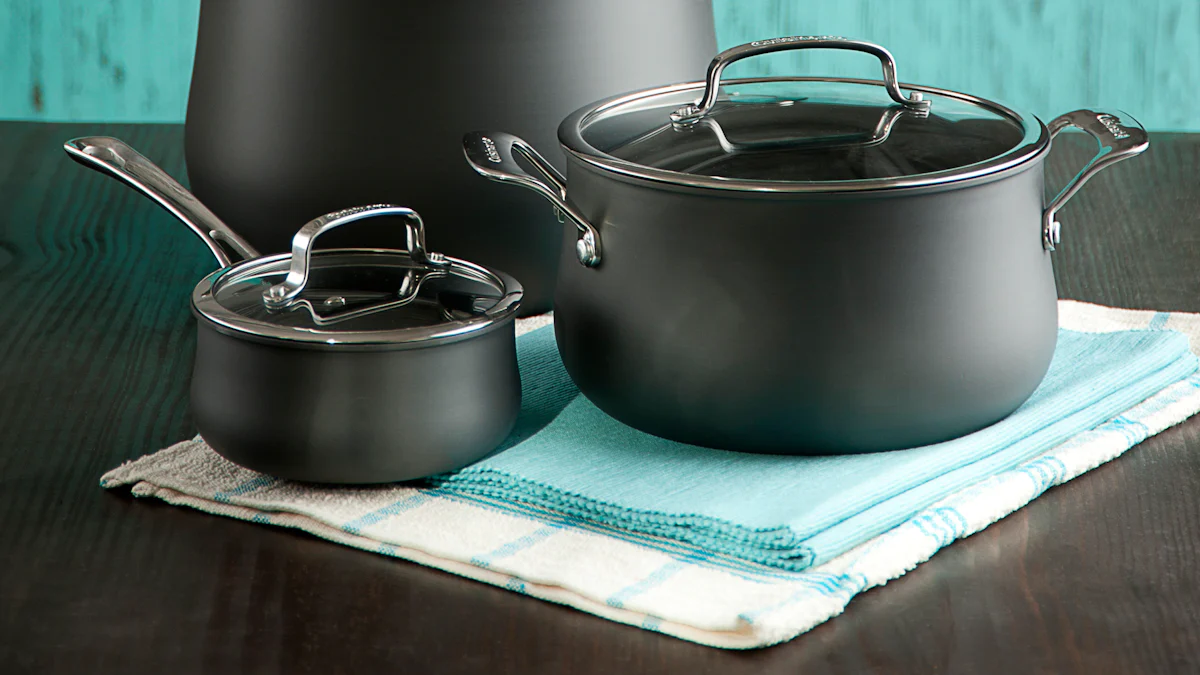What is Anodizing and how it is applied in die casting products?

Anodizing: What is Anodizing?
Definition and Purpose
Anodizing, often described as "what is anodizing," is a surface treatment process designed to enhance the properties of aluminum by forming a durable oxide layer on its surface. This process serves dual purposes: protection and aesthetics. By creating a protective barrier, anodizing shields aluminum from environmental elements such as moisture and air, which can lead to corrosion. Additionally, it improves wear resistance, making the material more durable for extended use.
Beyond protection, anodizing offers aesthetic versatility. The oxide layer can be dyed in a variety of colors, providing aluminum products with a decorative finish. This makes anodizing a preferred choice in industries like automotive, aerospace, and consumer electronics, where both functionality and visual appeal are critical. The increasing demand for lightweight, corrosion-resistant materials has further driven the adoption of aluminum anodizing services across these sectors.
How Anodizing Works
To understand "what is anodizing," it’s essential to explore its electrochemical foundation. In the anodizing process, aluminum serves as the anode (positive electrode) within an electrolytic cell, while a cathode, typically made of stainless steel or another conductive material, completes the circuit. When an electrical current flows through the electrolyte solution, it reacts with the aluminum surface to form a controlled oxide layer.
This oxide layer is not merely a coating but becomes an integral part of the aluminum itself. The process modifies the metal's microscopic texture and alters its crystal structure near the surface, enhancing its durability and wear resistance. The thickness and properties of the oxide layer are influenced by factors such as the type of electrolyte, the voltage applied, and the duration of the process. For instance, longer anodizing times can produce thicker layers, though they may also introduce stress and porosity into the oxide film.
Anodizing is a highly adaptable process. It can create a range of finishes, from hard, protective coatings to decorative, colored surfaces. This versatility makes aluminum anodizing suitable for diverse applications, from industrial machinery to consumer products. Moreover, the process aligns with the growing emphasis on environmentally friendly manufacturing, as it uses non-toxic materials and generates minimal waste. Understanding "what is anodizing" highlights its role as a sustainable and effective solution for enhancing aluminum's performance and appearance.
Key Takeaways
Anodizing enhances aluminum's durability by forming a robust oxide layer that protects against scratches, wear, and corrosion.
The anodizing process not only improves functionality but also allows for aesthetic customization, enabling a variety of colors and finishes.
Proper surface preparation is crucial for successful anodizing; cleaning and etching ensure a uniform oxide layer that adheres well to the aluminum.
Different types of anodizing, such as hard and decorative anodizing, serve specific purposes, from enhancing strength to improving visual appeal.
Anodized aluminum die-cast parts are ideal for industries like automotive and aerospace, where performance and durability are essential.
The anodizing process is environmentally friendly, using non-toxic materials and generating minimal waste, aligning with sustainable manufacturing practices.
Understanding material compatibility is key; the composition of aluminum alloys can affect the quality of the anodized finish.
The Anodizing Process for Aluminum Die-Cast Parts

Preparation of the Metal Surface
Before starting the anodizing process, you must ensure the aluminum die-cast parts are properly prepared. Surface treatments play a critical role in this stage. Cleaning the metal surface removes contaminants like grease, dirt, or oxides that could interfere with the formation of the protective oxide layer. You can achieve this by using chemical cleaning agents or mechanical methods such as abrasive blasting.
After cleaning, etching the aluminum surface helps to create a uniform texture. This step enhances the adhesion of the protective layer during anodizing. In some cases, you may also need to perform desmutting, which eliminates residues left by the etching process. Proper preparation ensures the aluminum die-cast parts are ready for the next phase, where the protective oxide layer will form effectively.
Electrochemical Oxidation
The core of the anodizing process lies in electrochemical oxidation. During this step, you immerse the aluminum die-cast parts in an electrolyte solution, typically sulfuric acid. The aluminum acts as the anode, while a cathode made of stainless steel or another conductive material completes the circuit. When you apply an electrical current, the surface of the aluminum reacts with the electrolyte, forming a controlled protective oxide layer.
This layer is not just a coating; it integrates with the aluminum itself, enhancing its durability and resistance to wear. The thickness of the protective oxide layer depends on factors like the voltage applied and the duration of the process. For aluminum die-cast parts, achieving the right balance is crucial. While thicker layers provide better protection, they may also introduce challenges such as stress or porosity. Optimizing this step ensures the anodizing of aluminum meets both functional and aesthetic requirements.
Sealing the Oxide Layer
Once the protective oxide layer forms, sealing becomes the final step in the anodizing process. This step is essential to enhance the corrosion resistance of the aluminum die-cast parts. You can achieve sealing by immersing the anodized parts in hot water or a sealing solution. This process closes the microscopic pores in the oxide layer, preventing moisture or contaminants from penetrating the surface.
Sealing also improves the durability of the protective layer, ensuring the aluminum retains its enhanced properties over time. For applications requiring colored finishes, sealing locks in the dyes applied during the anodizing process, preserving the aesthetic appeal of the die-cast parts. Proper sealing completes the anodizing process, making the aluminum die-cast parts ready for use in various industries.
Types of Anodizing and Their Applications
Hard Anodizing
Hard anodizing creates an extremely hard and wear-resistant surface on aluminum. This type of anodizing is ideal for applications requiring durability and strength. The process involves forming a thick oxide layer, which enhances the material's resistance to abrasion and corrosion. You will often find hard anodizing used in industrial and mechanical components, where parts must endure harsh conditions or heavy use.
Unlike other anodizing methods, hard anodizing focuses on functionality rather than aesthetics. The resulting surface is typically darker and less decorative. However, its superior hardness makes it suitable for applications such as aerospace equipment, automotive engine parts, and heavy-duty tools. If you need aluminum components that can withstand extreme environments, hard anodizing offers a reliable solution.
Decorative Anodizing
Decorative anodizing enhances the appearance of aluminum while providing moderate protection against wear and corrosion. This process creates a thinner oxide layer compared to hard anodizing, making it perfect for applications where aesthetics are a priority. You can achieve vibrant colors by dyeing the oxide layer, allowing for customization to match specific design requirements.
This type of anodizing is widely used in consumer goods, electronics, and architectural elements. For example, you might see decorative anodizing in smartphone casings, kitchen appliances, or building facades. The process not only improves the visual appeal of aluminum products but also adds a layer of protection, ensuring they maintain their look over time. If you value both style and functionality, decorative anodizing provides an excellent balance.
Sulfuric Acid Anodizing
Sulfuric acid anodizing is one of the most common methods for treating aluminum. This process uses sulfuric acid as the electrolyte to form a protective oxide layer. It is versatile and suitable for a wide range of applications, from industrial machinery to household items. The oxide layer produced through this method offers good corrosion resistance and wear protection.
You can use sulfuric acid anodizing for both functional and decorative purposes. The process allows for dyeing, enabling you to add color to the aluminum surface. Additionally, it serves as a base layer for other coatings, such as paint or powder coating. This adaptability makes sulfuric acid anodizing a popular choice across various industries, including automotive, electronics, and construction.
Benefits of Anodizing for Aluminum Die-Cast Parts
Enhanced Durability
Anodizing significantly improves the durability of aluminum die-cast parts. The process creates a robust oxide layer that integrates with the aluminum surface, offering increased surface hardness. This layer acts as a shield, protecting the metal from scratches, dents, and wear caused by daily use or harsh environments. You can rely on anodized aluminum to maintain its structural integrity even under heavy application, making it ideal for industries like aerospace and automotive.
The enhanced durability also ensures that aluminum die-cast parts last longer, reducing the need for frequent replacements. This longevity makes anodized components a cost-effective choice for manufacturers and consumers alike. Whether you are designing industrial machinery or consumer products, anodizing guarantees a durable and high-quality finish that withstands the test of time.
Improved Corrosion Resistance
One of the most valuable benefits of anodizing is its ability to provide high corrosion resistance. The protective oxide layer formed during the process prevents moisture, air, and other corrosive elements from penetrating the aluminum surface. This enhanced corrosion resistance makes anodized aluminum die-cast parts suitable for environments exposed to humidity, salt, or chemicals.
For example, in the aerospace and marine industries, where materials face constant exposure to corrosive conditions, anodized aluminum ensures reliable performance. You can trust anodized components to resist degradation, maintaining their functionality and appearance over time. By choosing anodized aluminum die-cast parts, you invest in products that offer superior protection against corrosion.
Aesthetic Customization
Anodizing not only enhances functionality but also provides aesthetic versatility. The process allows you to dye the oxide layer in a wide range of colors, enabling customization to meet specific design requirements. Whether you need vibrant hues for consumer electronics or subtle tones for architectural elements, anodizing delivers visually appealing results.
The anodized finish retains its color and texture even under heavy use, ensuring that aluminum die-cast parts maintain their aesthetic appeal. This makes anodizing a popular choice for products like smartphone casings, kitchen appliances, and sporting equipment. By combining durability with aesthetic customization, anodized aluminum offers a perfect balance of form and function.
Practical Applications of Anodized Aluminum Die-Cast Parts

Automotive Industry
In the automotive industry, anodized aluminum die-cast parts play a vital role in enhancing vehicle performance and durability. You will find these parts used in components like engine housings, transmission cases, and heat sinks. The anodizing process improves the corrosion resistance of aluminum, ensuring that these parts withstand exposure to moisture, road salts, and extreme temperatures. This durability is essential for maintaining the reliability of vehicles over time.
Anodized aluminum also contributes to weight reduction in automobiles. Lightweight materials improve fuel efficiency and reduce emissions, aligning with the industry's push for sustainability. Additionally, the aesthetic customization offered by anodizing allows manufacturers to create visually appealing finishes for decorative trims and interior components. By choosing anodized aluminum die-cast parts, automakers achieve a balance between functionality, efficiency, and design.
Electronics and Consumer Goods
Anodized aluminum die-cast parts are widely used in electronics and consumer goods due to their combination of durability and aesthetic appeal. You can see these parts in products like smartphones, laptops, cameras, and kitchen appliances. The anodizing process enhances the surface hardness of aluminum, protecting it from scratches and wear caused by daily use. This ensures that devices maintain their sleek appearance even after prolonged handling.
The ability to dye anodized aluminum in various colors makes it a popular choice for consumer products. Manufacturers use this feature to create vibrant and stylish designs that appeal to customers. For example, anodized finishes on smartphone casings and cookware not only improve their look but also provide a protective layer against corrosion. By incorporating anodized aluminum die-cast parts, companies deliver products that combine practicality with visual sophistication.
Aerospace and Industrial Equipment
In aerospace and industrial applications, anodized aluminum die-cast parts offer unmatched performance and reliability. The aerospace industry relies on these parts for critical components such as airframe skins, rotor blades, and hydraulic control housings. The anodizing process enhances the corrosion resistance and wear resistance of aluminum, ensuring that these parts perform well under harsh conditions. Lightweight anodized aluminum also helps reduce the overall weight of aircraft, improving fuel efficiency and operational performance.
Industrial equipment benefits from the durability and strength of anodized aluminum die-cast parts. These parts are used in machinery, tools, and structural components that require high resistance to wear and environmental factors. The smooth and visually appealing finish achieved through anodizing adds an extra layer of value, making these parts suitable for both functional and decorative purposes. By utilizing anodized aluminum, industries meet the demands for robust and efficient materials.
Challenges and Considerations in Anodizing Aluminum Die-Cast Parts
Material Compatibility
When anodizing aluminum die-cast parts, you must consider the material's compatibility with the process. Aluminum alloys used in die casting often contain other metals like zinc, magnesium, or copper. These additional elements can affect the quality of the oxide layer formed during anodizing. For example, high levels of copper may reduce corrosion resistance, while zinc can lead to uneven finishes. Understanding the composition of the alloy helps you predict how it will respond to the anodizing process.
Die-cast aluminum parts also have a different surface structure compared to wrought aluminum. The casting process creates a porous surface, which may require extra preparation to ensure a uniform oxide layer. Cleaning, etching, and desmutting become even more critical for die-cast parts. Without proper preparation, the anodized layer may not adhere well, compromising both durability and appearance. By addressing these material-specific challenges, you can achieve better results and enhance the performance of anodized aluminum components.
Cost and Process Complexity
Anodizing aluminum die-cast parts involves costs and complexities that you need to evaluate carefully. The process requires specialized equipment, including tanks for electrolyte solutions and power supplies for electrochemical oxidation. Setting up and maintaining this equipment adds to the overall expense. Additionally, the need for precise control over variables like voltage, temperature, and time increases operational complexity.
The type of anodizing you choose also impacts costs. Hard anodizing, for instance, demands longer processing times and higher energy consumption, making it more expensive than decorative or sulfuric acid anodizing. Furthermore, the preparation phase for die-cast aluminum parts often requires additional steps, such as extensive cleaning and surface treatments, which add to the labor and material costs.
Despite these challenges, anodizing remains a valuable investment due to the benefits it provides, such as enhanced corrosion resistance and aesthetic customization. By optimizing the process and selecting the right type of anodizing for your application, you can balance costs while achieving high-quality results. Careful planning and attention to detail ensure that the anodizing process delivers maximum value for aluminum die-cast parts.
Anodizing transforms aluminum die-cast parts into durable, corrosion-resistant, and visually appealing components. This process enhances the surface properties of aluminum, making it suitable for a wide range of applications. By improving durability, anodizing ensures that die-cast products withstand wear and harsh conditions. Its ability to resist corrosion extends the lifespan of these parts, while aesthetic customization adds value to their appearance. Whether for industrial or decorative applications, anodizing elevates the performance and appeal of aluminum die-cast parts, making it an essential technique in modern manufacturing.
FAQ
What is anodizing, and why is it important for aluminum die-cast parts?
Anodizing is an electrochemical process that enhances the surface of aluminum by creating a protective oxide layer. This layer improves durability, corrosion resistance, and aesthetic appeal. For aluminum die-cast parts, anodizing ensures better performance in harsh environments and extends their lifespan.
What types of anodizing are available for aluminum die-cast parts?
You can choose from several types of anodizing, including hard anodizing, decorative anodizing, and sulfuric acid anodizing. Each type serves specific purposes. Hard anodizing focuses on durability, decorative anodizing enhances appearance, and sulfuric acid anodizing offers versatility for both functional and aesthetic needs.
How does anodizing improve the durability of aluminum die-cast parts?
The anodizing process forms a robust oxide layer that integrates with the aluminum surface. This layer increases hardness and protects against scratches, wear, and dents. It ensures that aluminum die-cast parts maintain their structural integrity even under demanding conditions.
Can anodized aluminum die-cast parts resist corrosion?
Yes, anodized aluminum die-cast parts offer excellent corrosion resistance. The oxide layer acts as a barrier, preventing moisture, air, and other corrosive elements from reaching the aluminum surface. This makes anodized parts ideal for use in humid, salty, or chemically exposed environments.
Is it possible to customize the appearance of anodized aluminum?
Absolutely. Anodizing allows you to dye the oxide layer in various colors, enabling customization to meet specific design requirements. This feature makes anodized aluminum suitable for products where both functionality and visual appeal are essential.
What industries benefit the most from anodized aluminum die-cast parts?
Industries such as automotive, aerospace, electronics, and consumer goods benefit significantly from anodized aluminum die-cast parts. These parts enhance performance, durability, and aesthetics in applications like engine components, smartphone casings, and industrial machinery.
Are there any challenges in anodizing aluminum die-cast parts?
Yes, challenges include material compatibility and process complexity. Aluminum alloys used in die casting may contain other metals that affect the quality of the oxide layer. Additionally, the porous surface of die-cast aluminum requires extra preparation to ensure a uniform finish.
How does the anodizing process align with sustainable manufacturing?
Anodizing uses non-toxic materials and generates minimal waste, making it an environmentally friendly process. It enhances the lifespan of aluminum parts, reducing the need for frequent replacements and contributing to sustainable manufacturing practices.
Can anodized aluminum die-cast parts be used in extreme environments?
Yes, anodized aluminum die-cast parts perform well in extreme environments. The protective oxide layer resists wear, corrosion, and temperature fluctuations, making these parts reliable for aerospace, marine, and industrial applications.
What factors influence the cost of anodizing aluminum die-cast parts?
Several factors affect the cost, including the type of anodizing, preparation steps, and equipment required. Hard anodizing, for example, involves longer processing times and higher energy consumption. Proper planning helps balance costs while achieving high-quality results.
See Also
How Electroplating Improves Diecast Product Durability
Seven Steps to Collaborate with an Overseas Diecast Factory
The Importance of QFD, FMEA, and DOE in Quality Manufacturing
Leading Aluminum Labels in the US, EU, and China
Understanding MOQ and Its Effect on RFQs
About Hunan Puka
Established in 2016 and based in Hunan, China, with a liaison point in Berlin, we are a Tier 2 supplier for the automobile industry. We specialize in the production of customized aluminum die-casting parts designed for machines with a closing force ranging from 280 to 800 tons, with subsequent manufacturing process CNC machining and surface treatment. Our commitment to quality is reflected in our accredited quality management system, certified by ISO9001:2015 and IATF16949:2016 standards.


